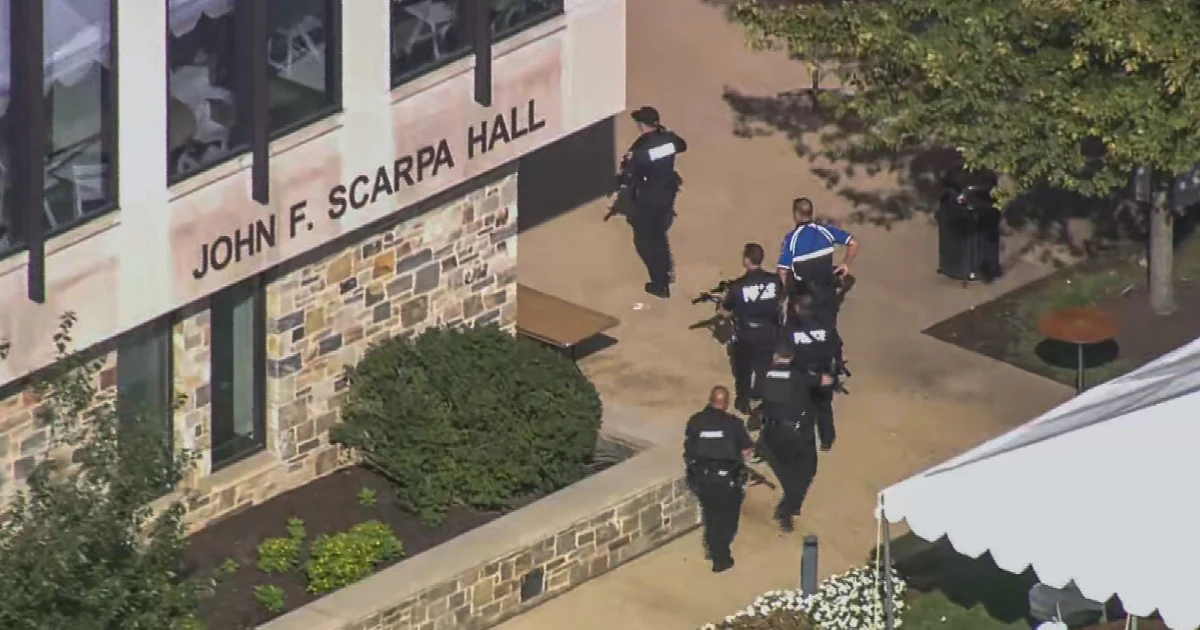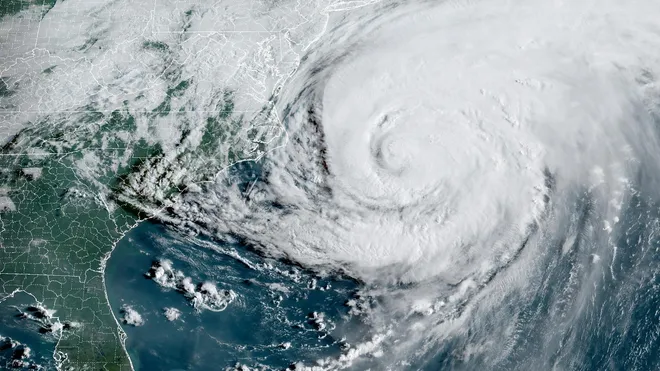On a quiet weekday afternoon, Villanova University, a renowned institution in Pennsylvania, was shaken by chaos. Reports of an active shooter on campus spread quickly, throwing students, faculty, and families into a state of fear. Emergency alerts, social media posts, and frantic phone calls amplified the panic. But after a tense investigation, police confirmed what everyone hoped for—there was no gunman, no injuries, and no active shooter. The alarming reports turned out to be a hoax.
- What Happened at Villanova University?
- The Rise of False Active Shooter Reports
- Why Do People Make These Hoax Calls?
- The Psychological Toll on Students and Faculty
- Law Enforcement Response and Challenges
- Legal Consequences of Hoax Reports
- Campus Safety in the Age of Hoaxes
- Social Media’s Role in Panic
- Comparing Villanova to Other Incidents
- Expert Opinions
- The Bigger Picture: Gun Violence Anxiety in America
- Moving Forward: What Needs to Change?
- FAQs
- Conclusion
While relief quickly followed the announcement, the incident highlighted a disturbing and growing trend: false active shooter reports at schools and universities. These hoaxes, often referred to as “swatting” incidents, disrupt communities, spread fear, and strain emergency response systems. This article dives deep into what happened at Villanova, why such hoaxes are on the rise, and what it means for campus safety nationwide.
What Happened at Villanova University?
The incident unfolded when campus security and local police received a call reporting an active shooter at Villanova University. Authorities immediately treated the threat as credible.
Students received emergency text alerts urging them to shelter in place. Professors locked classroom doors. Parents scrambled for updates, some even driving to campus in desperation. Police officers swept through university grounds, searching for any sign of danger.
After a thorough investigation, law enforcement confirmed there was no shooter, no weapons, and no victims. The report was entirely false. Relief was widespread, but the fear students experienced left a lasting impact.
A sophomore student later shared, “When the alert came, I froze. My friends and I pushed desks against the doors. For thirty minutes, we thought it was real. You don’t forget that feeling.”
The Rise of False Active Shooter Reports
The Villanova incident is not isolated. Across the United States, false reports of active shooters at schools and universities have surged. According to FBI data, hundreds of schools have faced hoax threats in recent years, many of them part of larger coordinated swatting campaigns.
Experts describe swatting as the act of making false emergency calls to trigger a massive law enforcement response. While once associated with online gaming rivalries, it has increasingly targeted schools and colleges.
In 2023 alone, more than 300 schools across multiple states were evacuated or locked down due to false shooting reports. Each case triggered panic, disrupted learning, and consumed valuable police resources.
Why Do People Make These Hoax Calls?
Motives behind false shooter reports vary:
Attention-seeking behavior – Some individuals crave the chaos and media coverage these hoaxes create.
Revenge or harassment – A disgruntled individual might target a school or student community.
Foreign actors – Law enforcement has identified international groups behind coordinated swatting campaigns.
Testing emergency systems – Some criminals view these hoaxes as “practice runs” for real attacks.
Unfortunately, each motive comes at a high cost. As one law enforcement official explained, “Every time officers rush into a reported shooting, resources are diverted from genuine emergencies.”
The Psychological Toll on Students and Faculty
Even though the Villanova case was a hoax, the fear felt by students was real. Mental health experts warn that repeated false alarms can have lasting effects.
Anxiety and hypervigilance: Students may struggle to concentrate in class, always fearing the next alert.
Erosion of trust: Repeated hoaxes may lead to skepticism, which can be dangerous if a real emergency occurs.
Parental fear: Families lose confidence in their children’s safety at school.
A Villanova faculty member reflected, “Even after the all-clear, some students were trembling. They kept asking, ‘What if it’s real next time?’ That lingering fear is the hardest part.”
Law Enforcement Response and Challenges
Police departments face an impossible balance when handling such calls. They must treat every report as real until proven otherwise—because ignoring a potential threat could cost lives.
In the Villanova case, local police quickly secured the perimeter, dispatched tactical units, and communicated updates. The response was effective, but also costly in time and manpower.
Officials later admitted that false reports drain budgets, fatigue officers, and risk accidental harm during chaotic sweeps. For example, innocent students may be confronted at gunpoint during searches, adding trauma to an already terrifying situation.
Legal Consequences of Hoax Reports
Making a false active shooter report is not a prank—it is a serious federal crime.
In Pennsylvania, filing a false emergency report can lead to up to 7 years in prison and fines exceeding $15,000.
At the federal level, swatting incidents may trigger charges of conspiracy, wire fraud, and making threats across state lines.
Law enforcement agencies are working with cybercrime units to trace calls and identify perpetrators. In past cases, suspects have been arrested as far away as Canada and Eastern Europe.
An FBI spokesperson noted, “We are tracking these cases aggressively. A hoax might feel anonymous, but digital footprints are rarely invisible.”
Campus Safety in the Age of Hoaxes
The Villanova hoax underscores the evolving challenges of campus security. Universities now must prepare for both real threats and false alarms.
- Some safety measures being adopted nationwide include:
- Enhanced emergency alert systems – Faster, more precise notifications to students and staff.
- Regular lockdown drills – Training communities to respond effectively without panic.
- Coordination with local police – Joint training exercises to improve response times.
- Mental health support – Counseling for students shaken by false alarms.
- Technology solutions – AI-driven call tracing to identify hoaxers more quickly.
- A campus safety expert summed it up: “Preparedness saves lives, but prevention saves communities. We need to stop these hoaxes before they happen.”
Social Media’s Role in Panic
During the Villanova incident, social media accelerated panic. Students posted unverified reports, which spread faster than official updates. In some cases, rumors of “multiple shooters” or “casualties” circulated, none of which were true.
Communication experts argue that universities must compete with social media speed to provide accurate, calming information. Delayed updates, even if cautious, can allow fear-driven narratives to dominate online spaces.
Comparing Villanova to Other Incidents
The Villanova hoax mirrors other recent cases:
In Virginia, a false report of an active shooter at a high school led to a lockdown of nearly 2,000 students.
In Texas, multiple schools were targeted in a single day by coordinated swatting calls.
In California, a university campus was evacuated after a hoax call, resulting in injuries as students fled in panic.
Each case reveals the nationwide scale of the problem. These hoaxes are not isolated mistakes—they represent a broader security challenge.
Expert Opinions
Security analysts, educators, and law enforcement all agree: while hoaxes may not involve real gunmen, the danger is real.
Police Chief’s Perspective: “We cannot afford to treat any call lightly. The risk of ignoring a true threat outweighs the frustration of a hoax.”
Educator’s Perspective: “Universities must strike a balance between preparedness and compassion. Students shouldn’t feel like they’re living under siege.”
Parent’s Perspective: “Even though it was a hoax, those 20 minutes of silence waiting for a text from my daughter were the longest of my life.”
The Bigger Picture: Gun Violence Anxiety in America
The Villanova hoax gained traction partly because Americans are already on edge about gun violence. According to the Gun Violence Archive, the U.S. recorded over 650 mass shootings in 2023 alone.
This backdrop of real violence makes every report—true or false—feel believable. Students and parents know that school shootings, while statistically rare, are a real possibility. That fear fuels the intensity of responses to hoaxes.
Moving Forward: What Needs to Change?
The Villanova hoax is a wake-up call for universities and policymakers alike. To address this growing issue, several steps could be taken:
Harsher penalties for hoax callers – Deterrence through strong legal consequences.
Improved call-tracing technology – Faster identification of perpetrators.
Federal coordination – A national database of swatting incidents to detect patterns.
Mental health support for students – Ensuring false alarms do not erode well-being.
Public awareness campaigns – Educating communities about the seriousness of hoaxes.
FAQs
What happened at Villanova University?
A false report of an active shooter led to a campus lockdown, but police confirmed there was no gunman or injuries.
What is swatting?
Swatting is the act of making a false emergency report, such as a shooting, to trigger a police response.
Are these hoax reports common?
Yes. Hundreds of schools across the U.S. have faced similar hoaxes in recent years, often as part of coordinated campaigns.
What are the consequences for making a hoax shooter report?
Severe penalties include prison time, heavy fines, and possible federal charges.
How can universities prepare for both real and false threats?
By enhancing emergency alerts, coordinating with police, training staff and students, and providing mental health resources.
Did anyone get hurt at Villanova?
No. There were no injuries or weapons found; the report was confirmed as a hoax.
Why do people make false shooter reports?
Motives vary, including seeking attention, revenge, harassment, or disruption. Some hoaxes are linked to international actors.
Conclusion
The reported active shooter at Villanova University turned out to be a hoax, but the fear and chaos it caused were very real. In an age when school shootings dominate headlines, false alarms can traumatize communities, waste resources, and erode trust.
Villanova’s experience serves as a reminder that every threat must be taken seriously, but society must also confront the rise of swatting as a dangerous crime. Stronger technology, better communication, and tougher legal action may help reduce these incidents.
For students and families, the Villanova hoax was a moment of terror that ended in relief. But it leaves behind an urgent question: how do we protect campuses not only from real shooters but also from the destructive power of lies?












